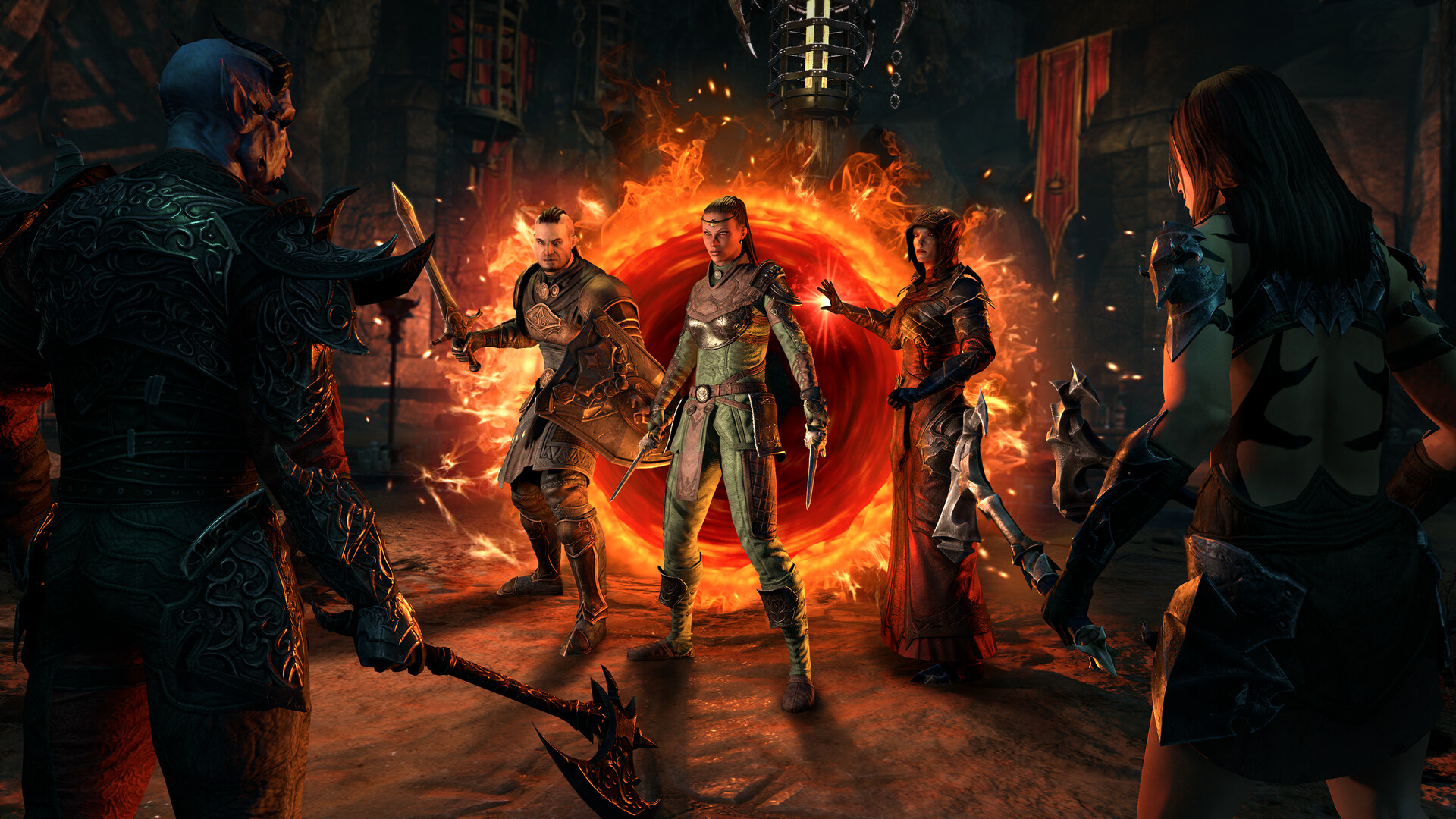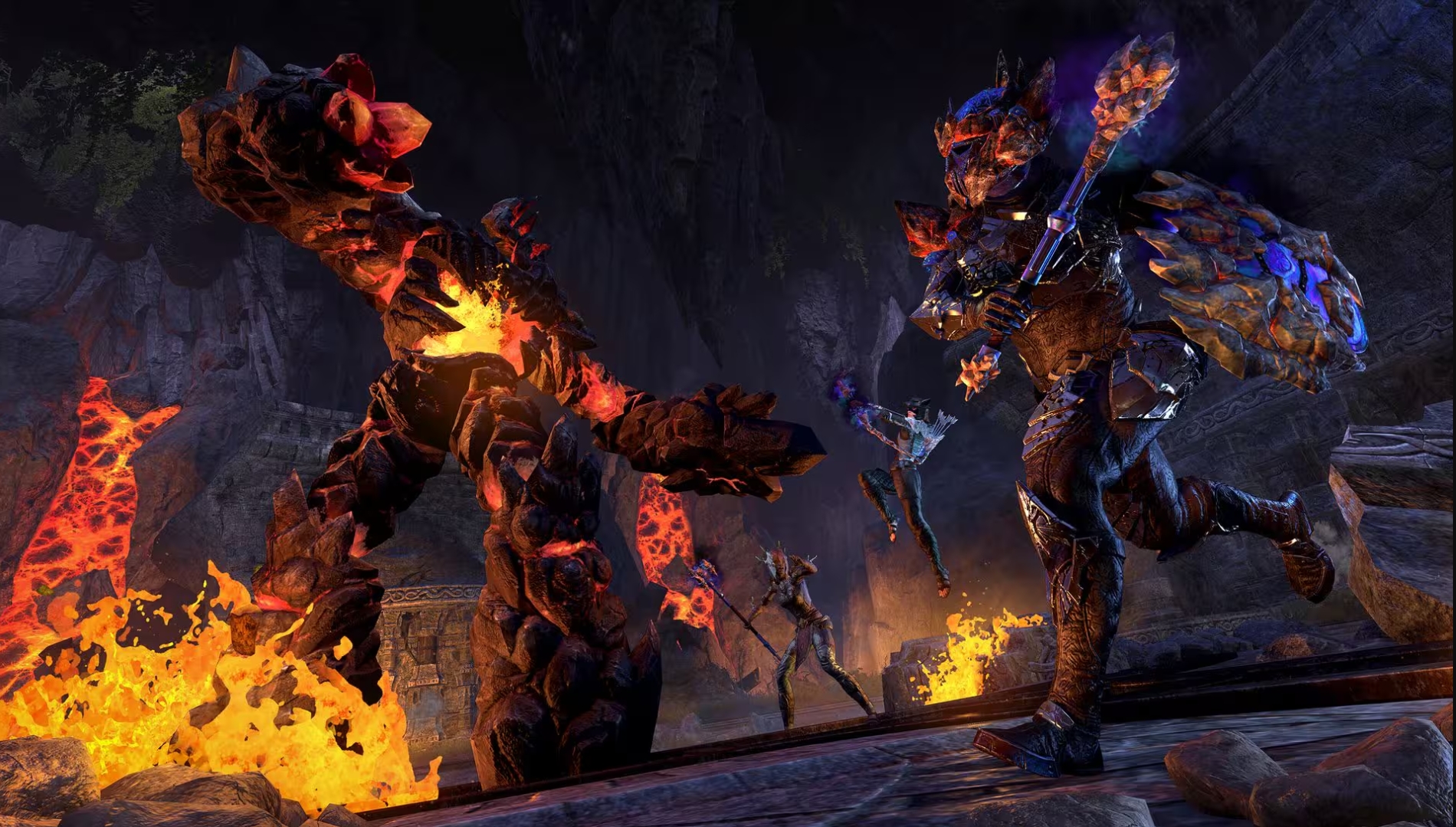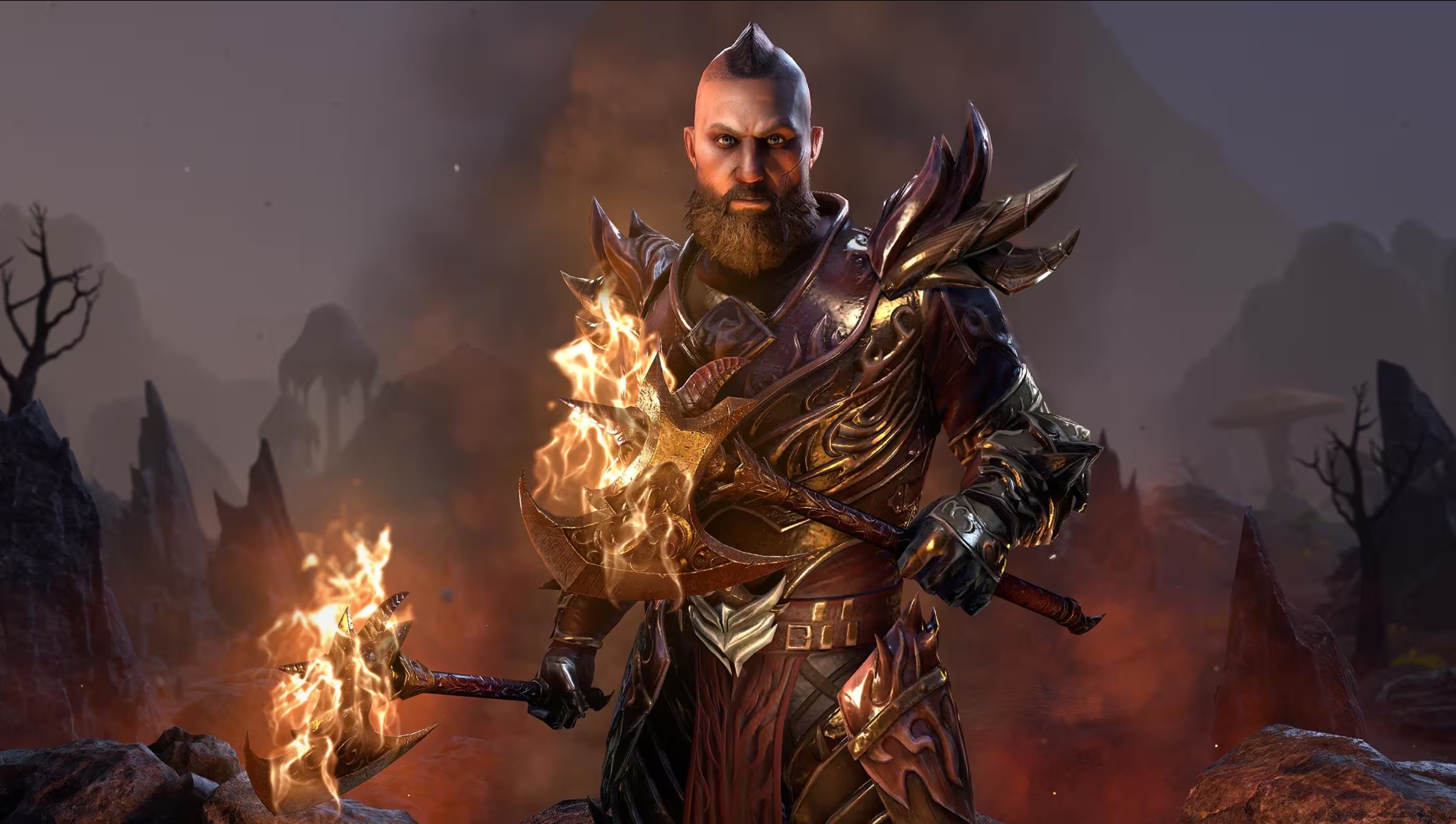Welcome to our ESO Gear Guide. Neither gear nor Skill alone can make you powerful. It’s only when you combine both that you become a truly unstoppable force. This Gear Guide will explain Elder Scrolls Online (ESO) item and gear mechanics while giving some helpful tips on how to maximize your character’s potential through itemizing. Our guide assumes you are new to the game and have limited knowledge. We have a table of contents section so feel free to skip ahead to the section that would benefit you most.
Gear + Skill = Power
Table of Contents
Part I – Gear Mechanics
Part II – Stats
Part III – Armor, Jewelry, and Weapons
Part IV – Itemizing
Sample Build – T3 The Talon Tank
Tips
Part I – Gear Mechanics
Gamers want powerful characters, but often times it’s not an easy task. There’s a methodology to building a strong character that starts with thinking ahead about your goal or vision. My gear hierarchy of needs illustrates some basic ideas to consider prior to starting that new character. Let’s discuss these prior to learning about ESO’s gear mechanics.
Foundation – Creating a visions and an outline of what you want your character to be is important. Some questions to consider are, what’s my preferred play-style (range/melee/solo), role (tank/healer/DPS), and what will I do at end-game (PvP/PvE)? Usually I tinker around with different characters, races, and builds in the early Beta to get a feel for my final selection. Then I set out a road-map or a detailed plan on a character archetype to get the most out of my character (see sample build).
Stats – Every game uses some type of stats to boost characters performance. Back in the 90’s, Contra had you picking up more power weapons or power-ups to help destroy enemies. This game uses Magicka, Stamina, and Health. Focusing on one or more is ideal. For my tank, I focus on self- healing Magicka, a high Health pool, and having enough stamina to block when needed.
Diminishing Returns (DR) – This is the point in which a stat becomes harder to increase. This means once you reach a certain point, say 100, every point therefore takes 2 instead of one. That point is also called the Soft Cap.
Soft Cap – refers to the point at which (DR) starts.
Hard Cap – is the point at which you cannot pass no matter how many points you spend.
Typically, you want to stay away from DR and spread your points out to get the most out of them.
Min/Max – This is an MMO term essentially meaning you’ve done everything possible to improve your character’s statistical performance. You’ve upgraded every piece of gear, changed every glyph, collected all the Skyshards, etc. This point is difficult to achieve thus making it the top of the hierarchy.
Part II – Stats

Attributes
Magicka – Used to cast spells (class or otherwise). The higher your Magicka pool, the more spells you can cast, the harder they hit, and the faster you regenerate the stat.
Max Magicka – Your overall pool of resources.
Magicka Recovery – How fast you regenerate the stat in combat.
Spell Damage – How hard your Magicka abilities hit.
Spell Critical – How often they critically hit, meaning doing 1.5x damage. This is probably the most important damage producing stat since it doesn’t have any DR as of yet. Crit=good.
Health – Your overall life pool.
Max Health – Your overall health pool or the amount of health you have before dying.
Health Recovery – How fast you regenerate health.
Stamina – Used for weapon based damage, rolling, dodging, blocking, sneaking, and sprinting.
Max Stamina- Your overall pool of resources.
Stamina Recovery – How fast you regenerate stamina in combat.
Weapon Damage – How hard your weapon based abilities hit.
Weapon Critical – How often they critically hit, meaning doing 1.5x damage. This is probably the most important damage producing stat since it doesn’t have any DR as of yet. Crit=good.
Miscellaneous Stats
Armor – Base damage reduction which is important for all classes.
Spell Resistance – Similar to armor but for spells.
Part III – Armor and Weapons

Armor Weights
Unlike most games which only allow certain classes to wear one or more types of armor, ESO allows all characters to equip any armor (Light, Medium, and Heavy). Each armor weight has it’s own passive skill line, 5 piece set bonus, and strengths and weakness.
Light Armor – has the lowest armor rating but provides major offensive benefit for magicka users such as; spell critical, magicka regeneration, and reduced magicka cost. Typically used for a range DPS or healer.
Medium Armor – is centered on weapon damage, stamina regeneration, and reduced stamina cost. Typically used for melee DPS or Range Bow wielding characters.
Heavy Armor – provides the most armor rating and health regeneration. This is generally used for tanks though some skills can provide the same protection.
Weapon Types
There’s basically two types of weapons, melee and range. Both have their own skill lines, including passives that provide unique pros and cons similar to armor. One thing to note, both daggers and sword shield setup allow you to equip an additional weapon. This gives you the possibility of using more set bonuses. There’s a near endless combination of armor, weapons, and skills, but that about your end-game goal and decisions will become clear.
Daggers
Melee weapon that can be dual wielded
Skill line paired with Nightgblade class can be devastating in PvP
Can have up to nine pieces of equipment making it good choice for melee DPS
Passive gives higher critical melee chance
Swords and Axes (can be used as dual wield or sword and shield)
The bread and butter melee weapon for tanks
Active abilities have taunt, leap, and stun
Can be combined with shield for nine pieces giving extra set bonus
Passive gives blocking bonus
Greatswords, Battleaxes, and Mauls
A decent PvP weapon that has great AoE
Active abilities include a leap, ultimate generation, and self-heal
Passive gives AoE bonus
Has a finisher which is good for classes that don’t have one (DK’s Templars)
Bows
Ranged weapon with roughly 28m+ range
Has good DoT damage and knock-back
Passives paired well with finisher
Staffs
The number one source of damage and healing in the game
Trial teams pretty much have to use staff for high damage
Active abilities are huge AoE, DoT, and heals
Can use animation canceling to increase damage (though I don’t)
Jewelry
These items provide a passive bonus to defense or offense. Some include reducing magicka cost or increasing bash damage. Currently, Jewelry can’t be crafted, just purchased or from enemy drops.
Item Quality
Armor, weapons, and jewelry all range in rarity. The higher the rarity, the better the item preforms. An example would be comparing a level 12 Fine Sword (30 base damage) vs. a Legendary Sword of the same level (40 base damage). You’re able to improve these through crafting. Here are the rarities
Normal (white)
Fine (green)
Superior (blue)
Epic (purple)
Legendary (orange)
Blacksmithing – Can improve weapons and heavy armor
Clothing – can improve light and medium armor
Woodworking – can improve shields, staffs, and bows
Traits
Along with crafting and improving ones items, you can also apply unique traits to each item. Below is a list:

Some important traits I use frequently:
- Training – A great way to level skill lines prior to end-game
- Weighted – Combined with a Restoration Staff for quick magicka return on heavy attack
- Precise – Excellent for daggers and/or dual wielding at providing major critical hit boost
- Infused – Good choice for DPS builds that want maximum stats
- Reinforce – A typical choice for tanks wanting to reach Hard Cap in armor
- Impenetrable – One of the best choices for PvP resisting one’s critical attacks
Part IV – Itemizing

Glyphs
Glyphs are crafted enchantments that can be added to armor, jewelry, and/or weapons. Glyphs are another tool for customizing your character and their bonuses depend on the type (see charts below).
 Something interesting about Glyphs is that they have large and small slots. Large slots give the full amount of stats listed once the item is crafted, say 103 Stamina for Head. While small slots only provide a fraction, maybe 1/3 for feet.
Something interesting about Glyphs is that they have large and small slots. Large slots give the full amount of stats listed once the item is crafted, say 103 Stamina for Head. While small slots only provide a fraction, maybe 1/3 for feet.

I try to add stats to large trait slots like a chest then add an effect to a small slot say feet. An example would be a heavy armor chest paired with infused trait and a Glyph of Increased Magicka. My feet would be a heavy armor paired with impenetrable trait and a Glyph of Increased Magicka. This gives me a good balance of attributes and stats to help my character reach DR.
Sample Build – “T3” The Talons Tank
Now that I’ve explained some of the basic gear concepts, let’s take a look at my personal character T3; Deltia the Nord Dragonknight main tank. This character and build are highlighted in my Dragonknights Don’t Die Series (including skills, full gear details, and more).
The main theme I went with is blocking and missing attacks. Fully itemized, my stats area all overcharged attributes and regeneration (ESO’s Soft Cap term) with a nearly 70% miss or dodge chance. I primarily focus on magicka for self-heals, have nearly zero critical chance since I don’t need it, and reduce blocking cost so I can continue blocking. Here’s the basic layout.
End-Game Objective –T3 is a self-sustaining main tank that appears to be unkillable.
Attributes Focus – All three near the soft cap.
DR – Reach hard cap on armor, soft cap on all regenerations, max magicka, stamina, and health.
Itemized – Legendary head to toe.
Attributes 0/49/0
Armor – 5 Heavy 2 Light
Armor Rating – without buffs 1900, with buffs 4000
All items are VR-12
| Slot | Armor Weight | Trait | Glyph | Set Bonus |
| Head | Heavy | Infused | Glyph of Magicka | Hist Bark |
| Chest | Heavy | Infused | Glyph of Magicka | Hist Bark |
| Belt | Light | Impenetrable | Glyph of Health | Hist Bark |
| Gloves | Heavy | Impenetrable | Glyph of Health | Hist Bark |
| Legs | Heavy | Infused | Glyph of Magicka | Hist Bark |
| Boots | Heavy | Impenetrable | Glyph of Stamina | Twilight’s Embrace |
| Shoulders | Light | Impenetrable | Glyph of Stamina | Twilight’s Embrace |
| Sword (bar 1) | Infused | Glyph of Absorb Stamina | Twilight’s Embrace | |
| Shield (bar 1) | Infused | Glyph of Stamina | N/a | |
| Resto Staff (bar 2) | Infused | Glyph of Absorb Magicka | Twilight’s Embrace | |
| Ring 1 | Glyph of Shielding | |||
| Ring 2 | Glyph of Shielding | |||
| Necklace | Glyph of Shielding |
Mundus Stone – The Ritual (easier to heal me)
Food – Consummate Honey Brittle
Set Bonuses – Twilight’s Embrace makes it easier for my healer to keep me up, while Hist Bark gives me 20% dodge chance while blocking.
Tips
Mundus Stone – Make sure to use Mundus Stones as a way to augment missing stats. There are stuns for Magicka regeneration, armor, and even critical hit power.
Set bonuses (crafted/PvP/drops) – There are many detailed guides out about set bonuses, I use basic sets that are “on” all the time. For instance, a stamina regeneration and added weapon power damage via Hundings is a great set for melee builds.
Cyrodiil Bonus – Be careful what home alliance you find yourself in, as it may have huge rewards or none. I typically find a service heavily dominated by my faction and park my companion there for the added bonuses. Then I guest in a hot or contested server for enjoyment.
Beverage or Food – Another item that can augment missing stats or regeneration is beverage or food. I typically eat the VR 5 food giving three 200+ boost to attributes. This keeps me near the soft cap for all three attributes.
Potions – Finally potions are vitally important for any class/build. There are great potions available via the alchemy creating, for instant weapon damage boost, critical hit boost, extra. Use this while bursting a boss down or charging a keep in Cyrodiil.
Summary
While I know this was a lot, I wanted to spend some time sharing what I’ve learned so far in ESO. If this was helpful or you want additional items to be covered, please leave a comment, email me or send a message Twitter. Thanks for reading!
 Reddit
Reddit
 Email
Email








Comments are closed.